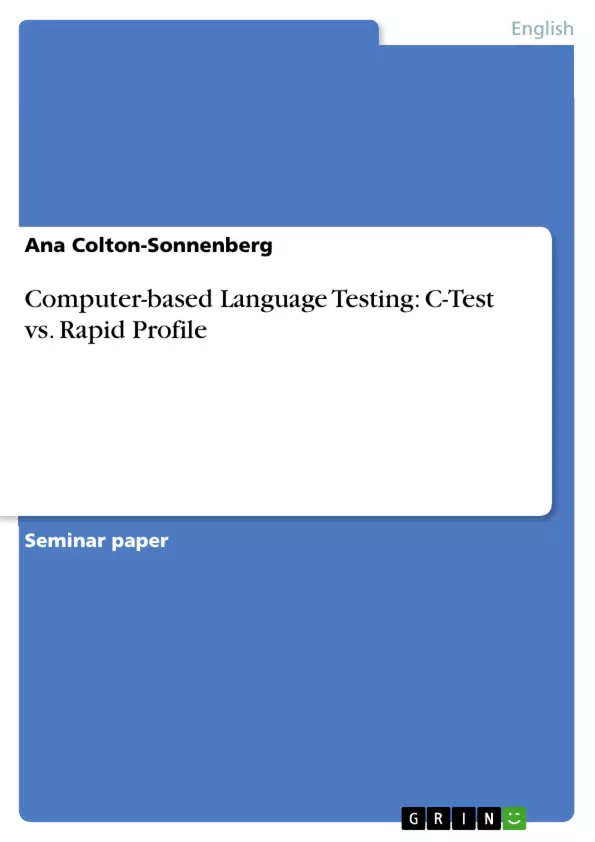Testing is an important part of language teaching. Tests can be used to place students in courses according to their knowledge, to diagnose their strengths and weaknesses, to identify their proficiency etc. There are many theories about what tests should analyse and how they should be taken. Depending on the relevance of the results, tests need to be more or less accurate. Furthermore, they should have a beneficial backwash on teaching. It is thus at least as important to examine testing itself.
Inhaltsverzeichnis (Table of Contents)
- Introduction
- Language Testing: Requirements, Types and Properties
- Test requirements
- Types of tests
- Test properties
- The C-Test
- What is a C-Test?
- The theory behind it
- Rapid Profile
- What is Rapid Profile?
- The theory behind it
- C-Test vs. Rapid Profile
- Conclusion
- Bibliography
Zielsetzung und Themenschwerpunkte (Objectives and Key Themes)
This work aims to provide a comprehensive overview of two computer-based language tests, the C-Test and Rapid Profile, and to compare their respective strengths and weaknesses.
- The requirements and properties of language tests
- The theoretical foundations of the C-Test and Rapid Profile
- The design and application of both test types
- A comparative analysis of their strengths and weaknesses
- The implications of these tests for language learning and teaching
Zusammenfassung der Kapitel (Chapter Summaries)
Chapter 1 introduces the topic of language testing and its importance in educational contexts. The chapter discusses the need for accurate and reliable tests that reflect the learners' proficiency level. It also touches upon the increasing use of computer-based language tests in recent decades.
Chapter 2 explores the requirements, types and properties of language tests in detail. It introduces concepts such as reliability, validity, and different types of tests, including proficiency, achievement, diagnostic, and placement tests. The chapter also examines different properties of tests, such as direct/indirect, discrete point/integrative, norm-referenced/criterion-referenced, objective/subjective, and computer adaptive testing.
Chapter 3 provides an in-depth analysis of the C-Test, a psycholinguistic-sociolinguistic test. It explains the theoretical basis of the C-Test, its design and administration, and its potential applications in various educational settings.
Chapter 4 presents Rapid Profile, another computer-based language test, and discusses its theoretical framework and practical implementation.
Chapter 5 offers a comparative analysis of the C-Test and Rapid Profile, highlighting their similarities and differences in terms of their theoretical foundations, design, and effectiveness.
Schlüsselwörter (Keywords)
The main keywords and focus topics of this work are: computer-based language testing, C-Test, Rapid Profile, language proficiency, reliability, validity, psycholinguistics, sociolinguistics, integrative testing, indirect testing, objective testing, language learning, and language teaching.
- Quote paper
- Ana Colton-Sonnenberg (Author), 2006, Computer-based Language Testing: C-Test vs. Rapid Profile, Munich, GRIN Verlag, https://www.grin.com/document/71206



